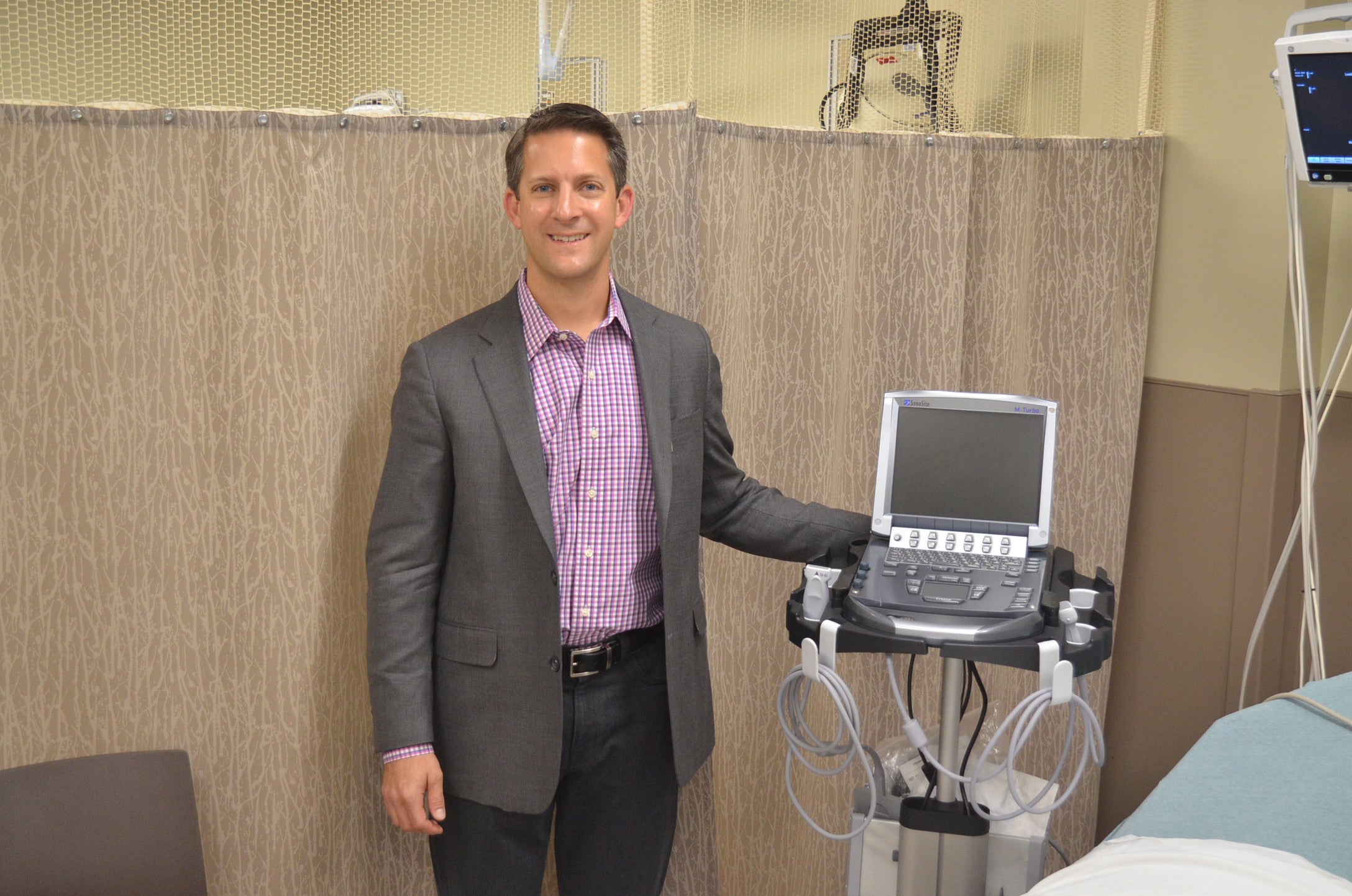Portable ultrasound gives local ER doctors insight
Published 5:45 pm Friday, December 14, 2018

- Dr. Sean Vanlandingham, the medical director for St. Vincent’s Chilton’s ER department, stands beside a portable ultrasound machine. (J.R. TIDWELL/ADVERTISER)
By J.R. Tidwell / Editor
Speed can become a crucial factor when it comes to working in the emergency room at a hospital.
One of the devices that ER physicians at St. Vincent’s Chilton use to help with diagnosing patients is a portable ultrasound machine.
“We have point-of-care ultrasound,” said Dr. Sean Vanlandingham, the medical director of the hospital’s ER department. “Ultrasound is not new necessarily, but the use of it in the ER is. Many people are familiar with ultrasounds, particularly when they are pregnant. In the last 10 years in the field of emergency medicine, ultrasound has become an integral part of how emergency physicians diagnose and treat their patients.”
Vanlandingham said that using portable ultrasound technology allows ER doctors to get a better look at certain types of trauma more rapidly than other methods, which could mean the difference between life or death.
“A very common exam ER doctors will do is what is called the FAST exam, the Focused Assessment with Sonography for Trauma,” he said. “What that means is if someone has a car accident out on the interstate, they get brought into the ER and they are having horrible abdominal pain, just by looking at them you don’t know yet what all is wrong.
“They might be fine and can go home later with a muscle relaxer, or they might have lacerated their liver and spleen and be in need of emergency surgery. ER physicians can do this FAST exam and literally in less than 60 seconds look in all four quadrants of the abdomen, and we are able to see (things like) if there is any free fluid or blood surrounding the spleen, liver or underneath the bladder. If they have that, we know right away that they have a serious abdominal injury.”
Vanlandingham said the next step upon discovering such a serious injury would be taking the patient to see a trauma surgeon.
“You can do that literally within minutes, whereas before that you have to wait for your CAT scan,” he said. “Even when you do that as fast as possible, that could take 30 minutes. In some cases that 29 minutes makes a big difference for the outcome of the patient.”
Vanlandingham describes himself as an “ultrasound fanatic,” and he sees the technology as a doctor’s new stethoscope.
“Doctors have always used stethoscopes to listen to our patients (for things like) heart murmurs and your lungs and your breathing,” he said. “Because ultrasound technology has progressed to the point where it is now portable and much more effective at rendering an image where you can understand what you are looking at, it now is a way for me to be able to see inside a patient.”
One of the benefits of using portable ultrasound technology is a doctor’s ability to be with the patient and give them real-time information while using the device. This can help ease a patient’s concerns more rapidly and also gives the physician’s care a more personal touch than if they were standing in another room say during an MRI or CAT scan.
According to Vanlandingham, another advantage of using ultrasound imaging is it being “safer” than other methods.
“With X-rays and CAT scans, there is radiation involved,” he said. “It is proven that the more CAT scans you have, the risk of you getting cancer later in life is slightly increased. Ultrasound uses sound. It works the same way that bats and dolphins find their food. It is completely harmless to the patient. It is just sound waves that enter the patient and get reflected back.
“You have to use it in the appropriate circumstances. Sometimes you absolutely need to get a CAT scan, MRI or X-ray because that’s the best test to diagnose what you are looking for.”
St. Vincent’s Chilton administrator Suzannah Campbell said that having portable ultrasound is part of “providing this community with every possible medical service they could need so that they don’t have to leave the community for care,” which has always been the hospital’s goal.
“There is always work to be done and more services that can be added, but it is wonderful to have this technology and to be able to give the physicians in the emergency department the option to look into the patient and find out what is going on more rapidly and get them the care they need,” she said.






